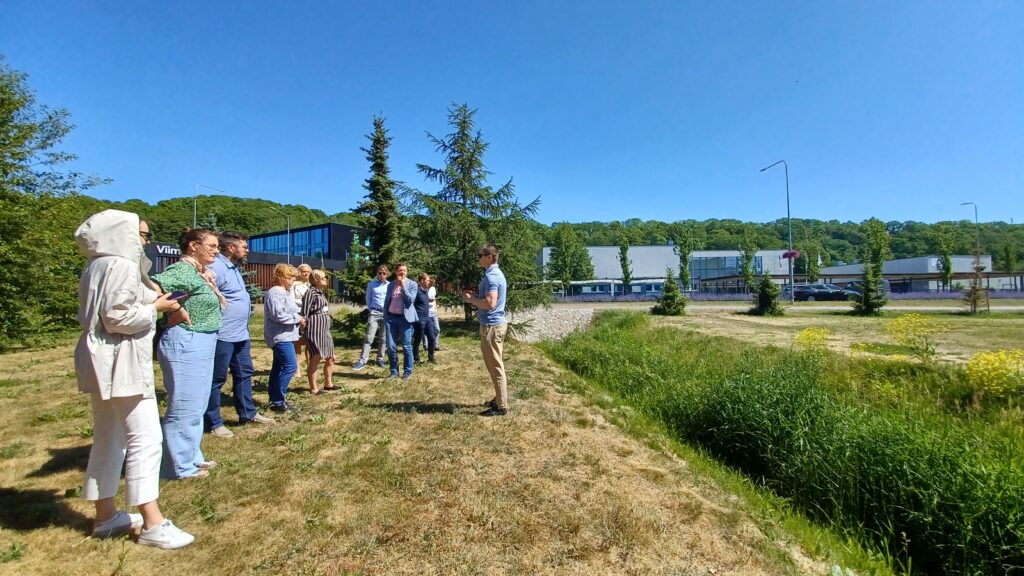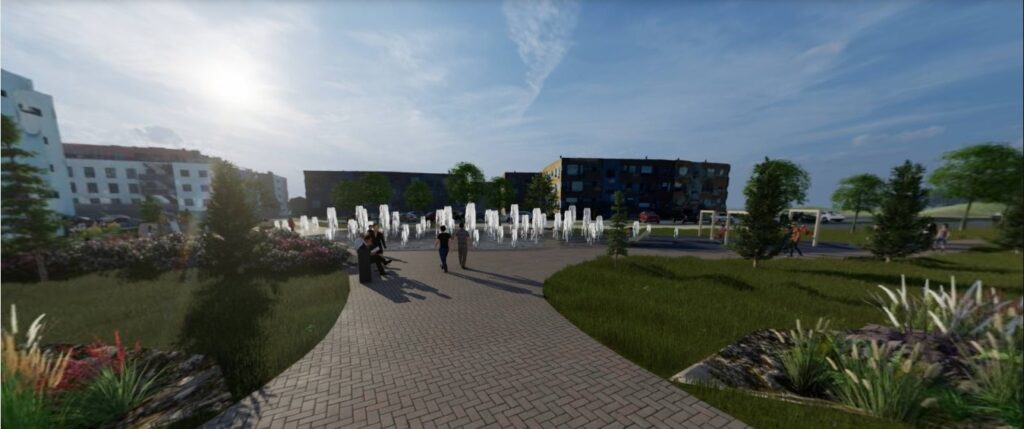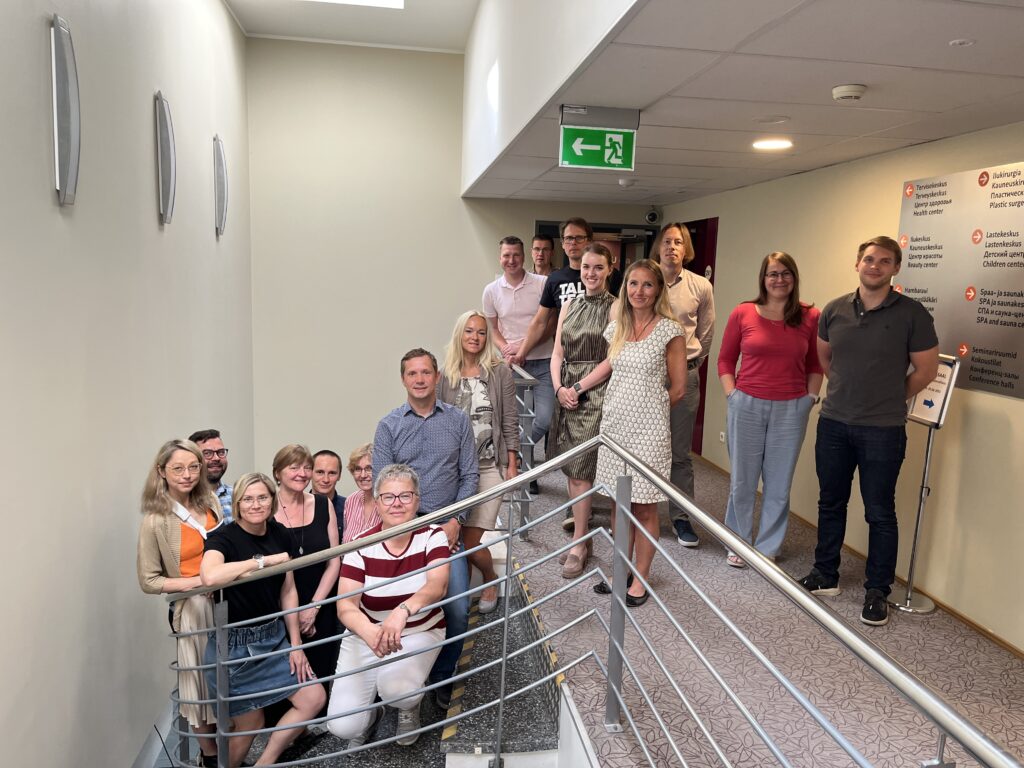Pilot Site in Spotlight: Viimsi’s Smart Nature-Based Stormwater Treatment and Retention Site
Both occasional floodings and extended periods of drought are challenges in the MUSTBE pilot site of the municipality of Viimsi, Estonia. A unique feature in the pilot site’s nature-based stormwater treatment solution will be a stormwater fountain.

During heavy rainfall or snowmelt, Viimsi’s MUSTBE pilot site area in the Haabneeme district is highly threatened by flooding. There have been multiple stormwater related incidents that have resulted in severe floodings in cellars and underground parking lots of residential buildings. For example, the flood water level in underground parking halls has risen to 0.5 metres. Also, the area occasionally has extended periods of droughts. The amount of water and flow rates tend to be either too high or too low. A cliff called Lubja in the district is one of the factors that makes the prediction more complicated.
– Technically speaking, our main challenges are the flow rates, it is difficult to predict them. There are lots of unknowns involved, says Siim Reinla, MUSTBE Project Manager at the Municipality of Viimsi.
Another feature that has an impact on the area’s stormwater management planning is the high amount of traffic. This means that pollutants and hazardous substances are discharged into the stormwater catchment area which flows directly to the Baltic Sea. The pilot site is surrounded by a main street area where there are multiple malls, schools, and other public buildings.
Also, it is estimated that Lubja cliff emits groundwater 5 litre per second year around. Because of the large volume of groundwater, the area’s stormwater systems are overwhelmed by flowrates. Viimsi’s solution for the flooding problem and purifying of both groundwater and stormwater is to build smart nature-based stormwater systems in key places of the catchment area. The nature-based solution (later in the text: NBS) will act as a retention system that decreases peak flowrates to reduce load on the stormwater system after heavy rain and will also have water purifying capability.

Conceptual drawing: The Municipality of Viimsi
Real-Time Control Offers the Most Reliable Results
Online monitoring and real-time control will be important aspects of the NBS. Real-time online monitoring gives the best possible information about the efficiency of the solutions. Reinla gives thanks to the universities among the MUSTBE project partners for helping with the technical aspects.
The Municipality of Viimsi is the lead partner in the MUSTBE project. According to Reinla, this is because of the municipality’s former positive experiences in Interreg Central Baltic stormwater projects. For example, the previous CleanStormWater project focused on remote sensing and reduction of hazardous substances and toxins entering the Baltic Sea. MUSTBE project relies on the acquired new knowledge, but it leads stormwater solutions to a new direction by combining stormwater purification technologies with nature-based solutions. The NBS in Viimsi will contain bonds and rain gardens to create an area for slowing down and reducing downstream flow volumes.

Improving Landscape Values
According to the current schedule, the construction work of the solution will begin in winter 2024. Estimated completion will be during the summer 2025. One of the unique features of Viimsi’s planned NBS is how the stormwater is used: a multifunctional rainwater-based fountain. It may be Estonia’s first fountain that will work mainly with stormwater, instead of drinking water.
In addition to improving the pilot site area’s landscape values, the fountain’s water amount will convey information about the prevailing climate. For example, this makes it easier for the inhabitants to notice if there is an extended period of drought going on. The NBS will also incorporate elements that add greenness to the urban environment and improve the number of species living in the area. These benefits will be acquired by building a small park. Viimsi municipality will build the 1st stage of the park within the MUSTBE project, and once fully constructed the park will contain different rainwater-based attractions. The aim is to raise awareness of the importance of stormwater management’s impact on the Baltic Sea’s future.
Project facts
- The MUSTBE project is led by Viimsi municipality.
- In addition to Viimsi, other project partners are City of Pori (Finland), City of Tallinn (Estonia), municipality of Söderhamn (Sweden), City of Riga (Latvia), Tallinn University of Technology (Estonia), Satakunta University of Applied Sciences (Finland), and Riga Technical University (Latvia).
- The project has seven pilot sites in total: alongside with Viimsi’s pilot site, there is one in Tallinn (Estonia), one in Viimsi (Estonia), one in Riga (Latvia) and two in both Pori (Finland), and Söderhamn (Sweden).
- MUSTBE (Multidimensional stormwater treatment in urban areas for cleaner Baltic Sea) is co-funded by the Interreg Central Baltic programme for 1.5.2023-30.4.2026.
- The project budget is 3 980 476 €.
Writers and editors: Krista Valkonen, Hanna Kajander and Meri-Maaria Salo

